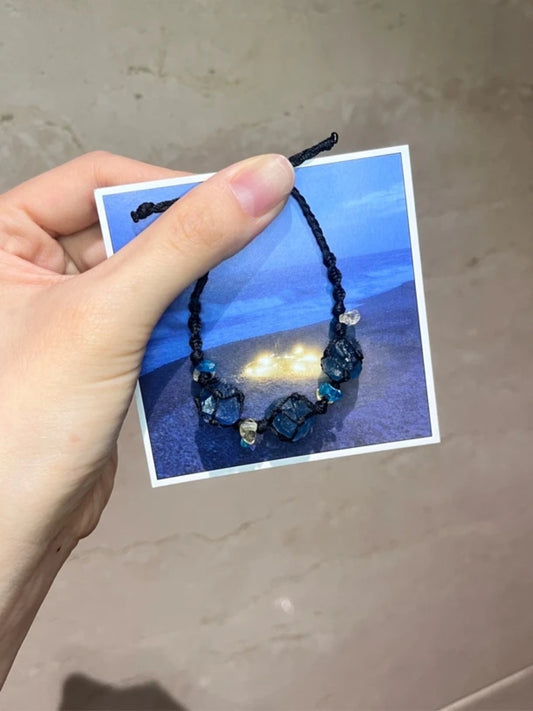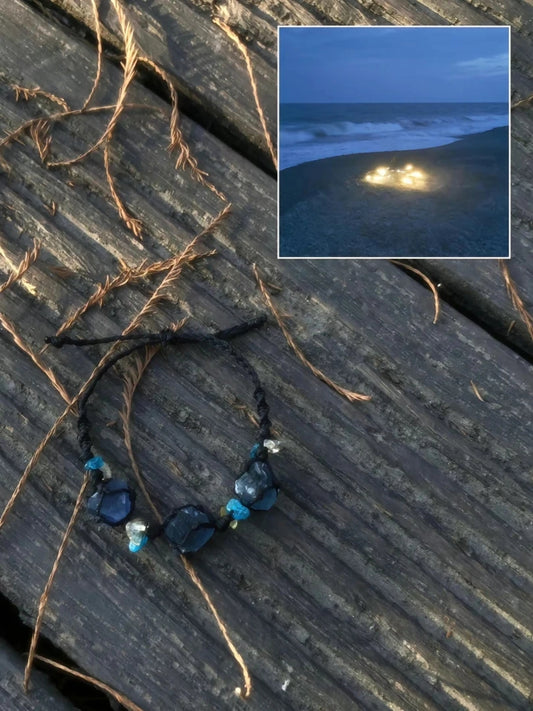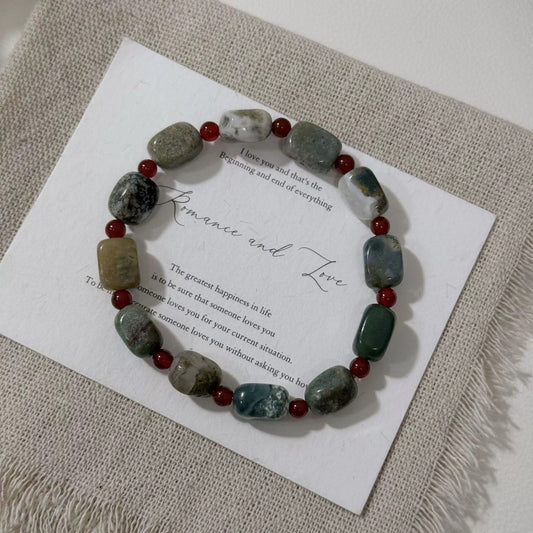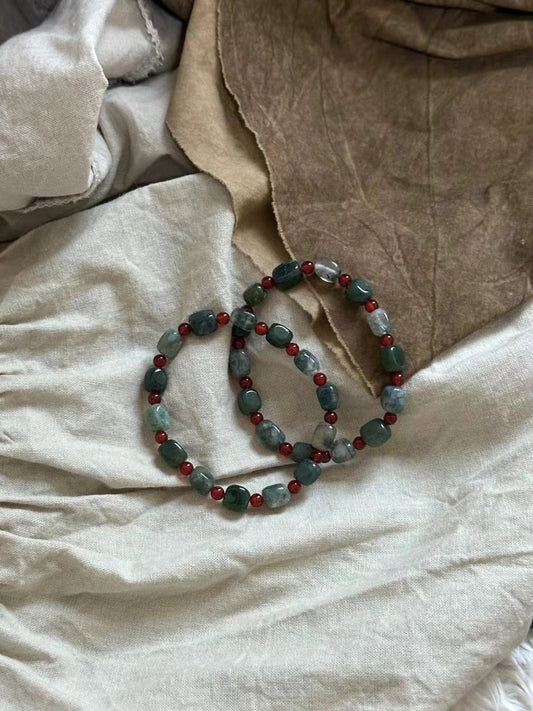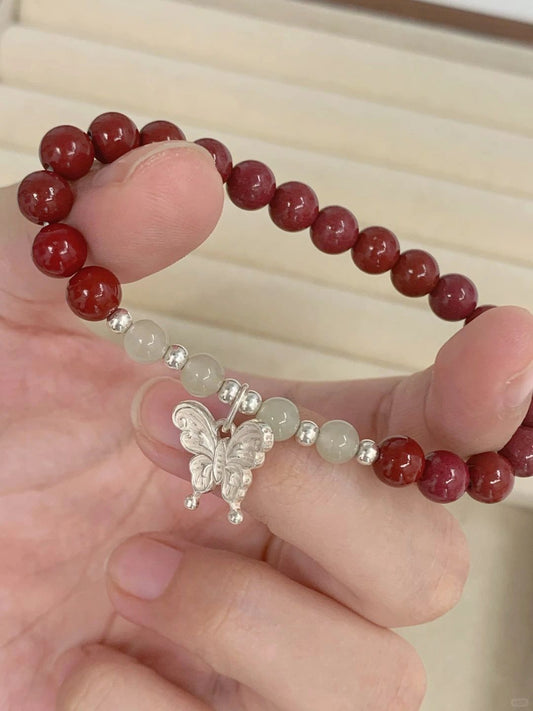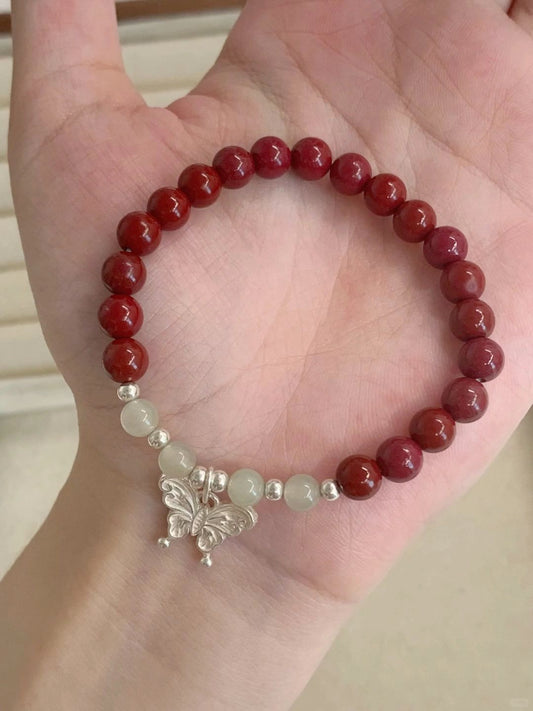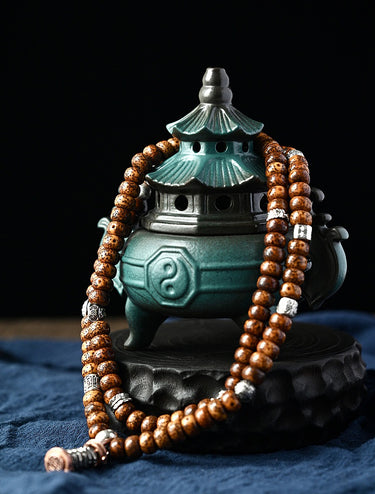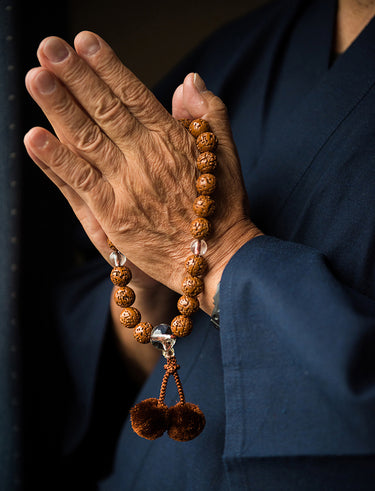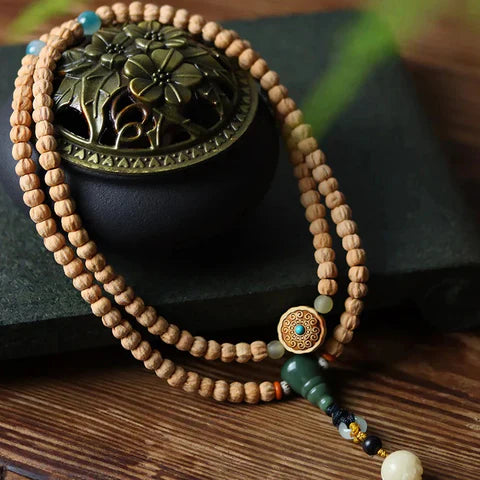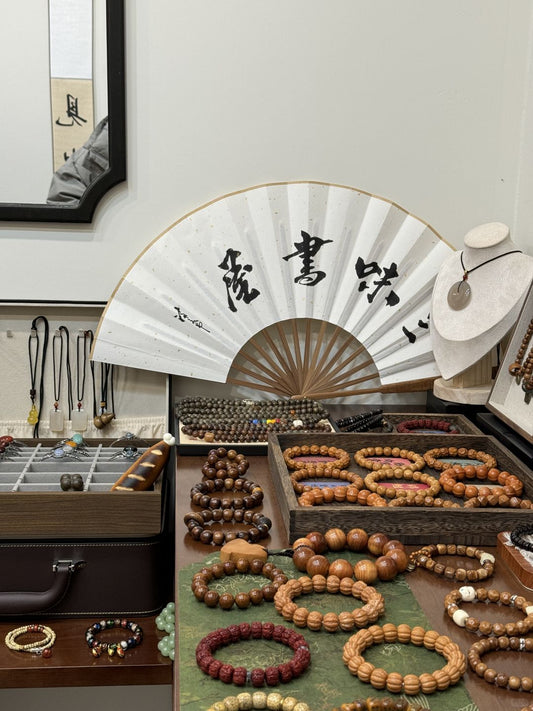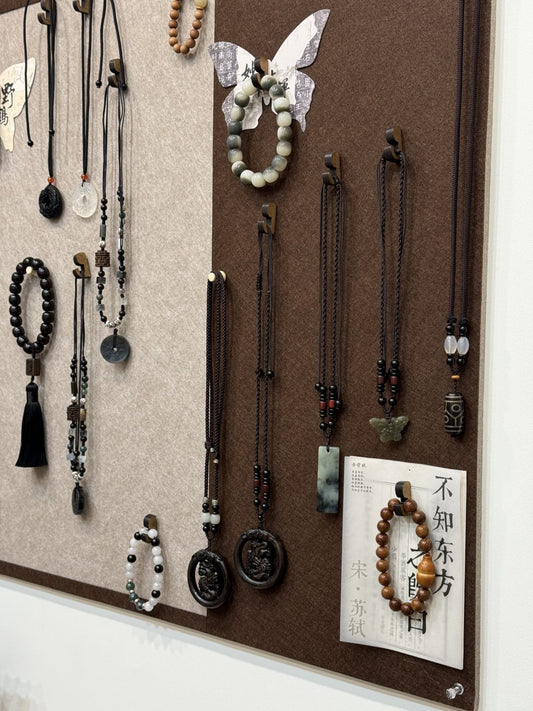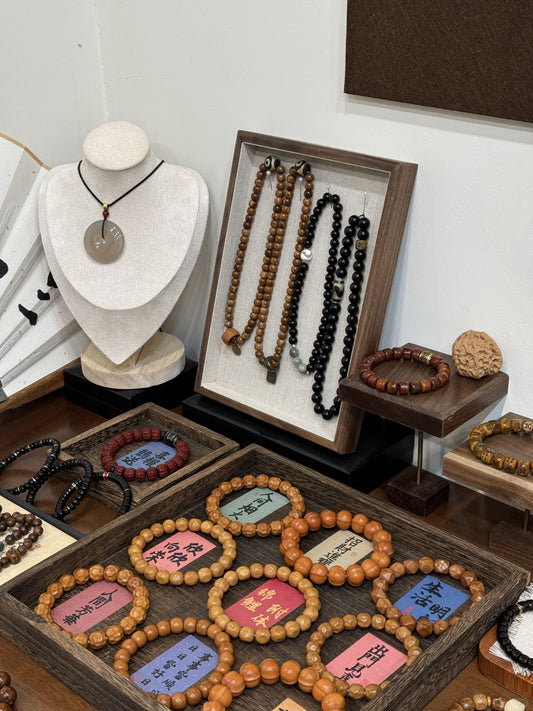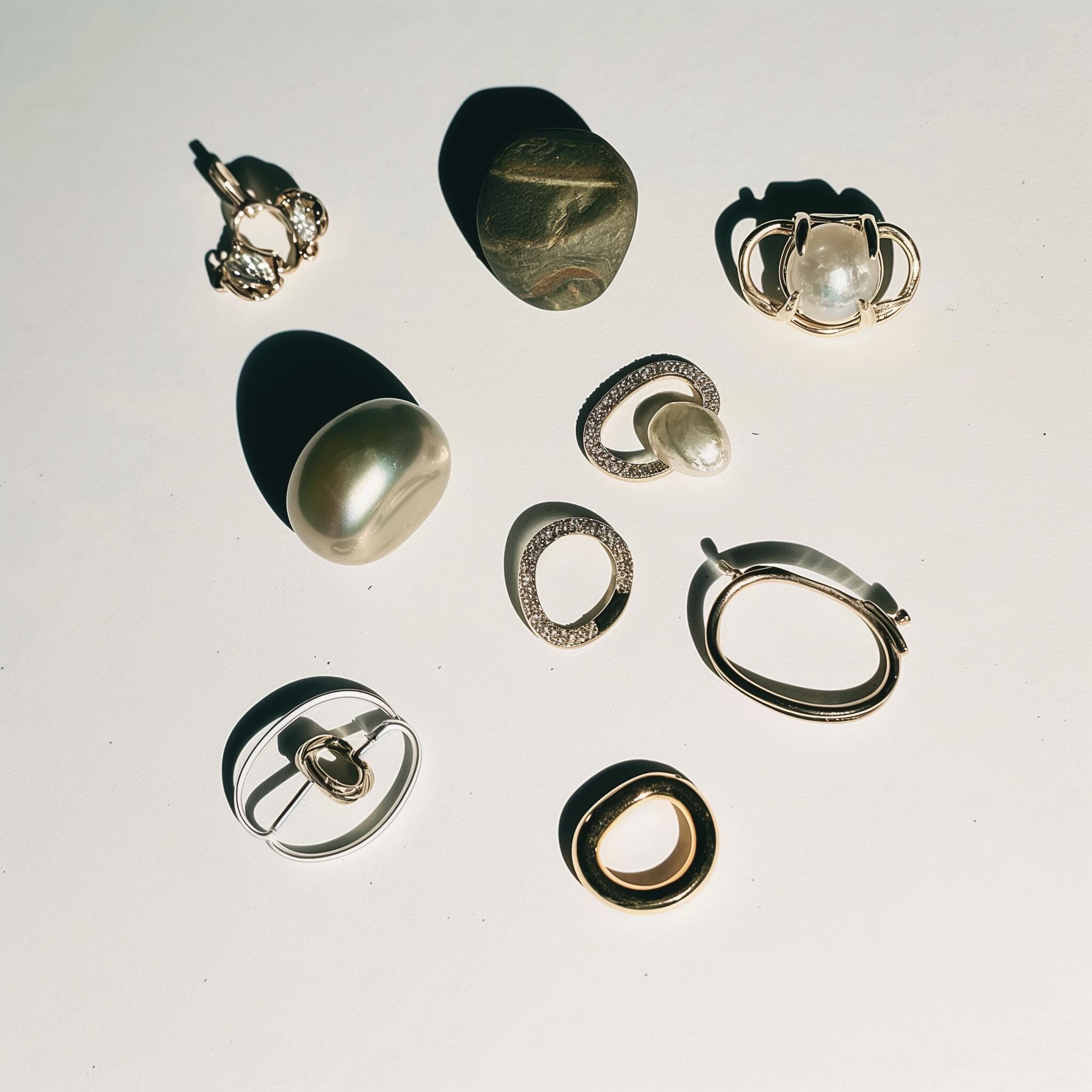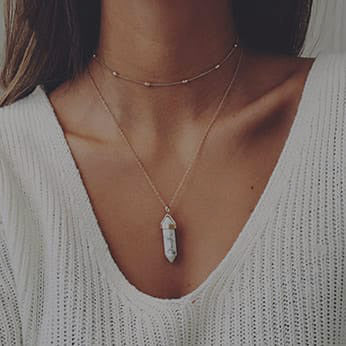Tibetan Cypress Seeds: A Complete Guide to Origins, Types, and Uses
Introduction
Tibetan Cypress Seeds, also known as Baixiangzi, are sacred beads deeply rooted in Tibetan and Chinese spiritual traditions. From their origin in monastery groves to their symbolic role in purification and protection, these seeds are cherished for their beauty, resilience, and connection to mindful practice and cultural heritage.

What Is Tibetan Cypress Seeds?
Tibetan Cypress Seeds, also known as Baixiangzi or Bo Xiang Seeds, come from a revered variety of cypress trees closely associated with Tibetan Buddhism. While cypress trees may have originally grown in India, the Tibetan variety has been cultivated for centuries around monasteries in regions like Tibet, Yunnan, and Qinghai. The most renowned of these is Reting Monastery, where ancient trees line the temple paths and are lovingly tended by monks.
The name "Reting" means “to eliminate all afflictions and remain free from the cycle of rebirth.” This profound spiritual meaning is deeply connected to the cypress seeds themselves, which are cherished for their association with monastic life, purity, and inner transformation.
Beyond the seeds, the entire cypress tree is considered sacred. Monks often use its leaves in boiling water for ritual cleansing, believing it purifies both the body and mind. The seeds—dense, durable, and full of tactile energy—are traditionally crafted into prayer beads and mala tools, serving as everyday reminders of discipline, impermanence, and devotion.
The outer skin of the Tibetan Cypress Seed is typically a pale yellowish-white, similar to that of Bodhi seeds. As the beads are handled and polished over time, their surface becomes smoother and glossier. The original color slowly darkens into a rich, reddish tone—earning them the nickname “Blood-Absorbing Seeds,” a poetic reference to the deep patina they develop with use.
Among practitioners, these seeds are affectionately known as “lazy man's beads,” because even minimal handling leads to beautiful aging and color transformation. This makes them especially favored by those who appreciate low-maintenance spiritual tools with high symbolic value.

Regional Varieties of Tibetan Cypress Seeds
Tibetan Cypress Seeds, traditionally used in prayer beads and malas, are primarily native to India but are also cultivated in regions across the Tibetan Plateau, including parts of Yunnan, Gansu, and Qinghai. Based on their physical characteristics, grain structure, and size, they can be grouped into three major regional varieties:
🔸 Reting-Type
Appearance: Slim, elongated beads with a smooth surface. With consistent handling and exposure to natural skin oils, they develop a translucent, jade-like glow.
Grain Pattern: Distinctive vein-like striations with rich, dynamic textures.
Typical Size: 5–7.5 mm
🔸 Chamdo-Type
Appearance: Rounded, full-bodied beads that gradually darken over time with wear or polishing.
Grain Pattern: Soft, shallow vein marks with broader tops and less pronounced edges.
Typical Size: 8–10 mm
🔸 Qinghai-Type
Appearance: Lower-density seeds often marked by visible dark sprouting points, making them less ideal for polishing or prolonged handling.
Grain Pattern: Irregular formations, frequently resembling spiral shells or flat disks.
Typical Size: 8–10 mm

Types of Tibetan Cypress Seeds
The texture, color, and grain pattern of Tibetan Cypress Seeds influence not only their appearance and tactile feel, but also how they age and develop a unique patina over time. These qualities are key to appreciating the character and spiritual appeal of each seed.
🔸 Skin Texture Types
1. Rough Skin
-
Features: Coarse surface with a sandy feel; highly textured with many ridges. Colors quickly.
-
Patina Result: Becomes semi-transparent with ease.
2. Powdery Skin
-
Features: Surface has a powdery, matte texture. Colors relatively quickly.
-
Patina Result: Develops a thick semi-transparent patina layer.
3. Oily Skin
-
Features: Extremely smooth and dense surface; hard texture. Colors more slowly.
-
Patina Result: Produces a glass-like glossy finish.
🔸 Skin Color Types
1. Red Skin
-
Features: Higher oil content; colors faster.
-
Color Change: Turns a deep reddish tone over time with play.
2. Ginger Yellow Skin
-
Features: Transitions from yellow to red through oxidation and use.
-
Color Change: Becomes a rich oxblood or deep orange-red with long-term wear.
🔸 Grain Pattern Types
When the skin quality and density are similar, the value of Tibetan Cypress Seeds generally increases in the following order:
Straight-Grain → Ghost Face → Charnel Ground
1. Straight-Grain
Features:
This type has well-aligned, full linear patterns that run straight across the bead.
Over time, with regular handling and polishing, straight-grain seeds tend to develop a smooth and rounded finish, offering a refined and balanced look.
2. Ghost Face
Features:
Identified by a single, relatively deep groove on the surface, which, when combined with surrounding indentations, resembles a ghost-like face—hence the name.
Ghost Face textures are more pronounced, giving the seed a rich, layered visual effect and a more dimensional feel after extended use.
3. Charnel Ground
Features:
Characterized by two deep, symmetrical grooves running parallel across the surface.
A common misconception is that any seed with two indentations is a Charnel Ground—however, true Charnel Ground seeds must have nearly symmetrical grooves to qualify.
They are rare and highly valued for their unique appearance and symbolic depth.

The Sacred Meaning of Tibetan Cypress Seeds in Tibetan and Chinese Culture
Tibetan Cypress seeds, revered in both Tibetan Buddhism and traditional Chinese culture, are not only natural treasures but also powerful spiritual symbols. From ritual purification to prayers for protection, these seeds carry deep cultural significance and heartfelt wishes for well-being.
Spiritual Purification and Inner Elevation
In Tibetan Buddhism, Tibetan Cypress seeds are considered sacred ritual tools (Dharma instruments). The trees are often planted around monasteries, and monks use the leaves to boil in water for ritual baths. This act symbolizes more than physical cleansing—it represents clearing the mind of defilements, washing away inner burdens, and opening the path toward spiritual elevation. The scent of the leaves is believed to have calming properties, helping practitioners find peace in both body and spirit.
A Protective Amulet for Peace and Health
Tibetan Cypress seeds are also regarded as protective amulets (talismans). Their natural form and calming fragrance are thought to shield the wearer from negative energies. Worn as bracelets or malas, they carry the intention of safeguarding loved ones and oneself, inviting peace, health, and emotional balance into daily life. Especially in times of uncertainty, they serve as grounding symbols of resilience and spiritual support.
Symbol of Auspiciousness and Joy
In traditional Chinese culture, Tibetan Cypress seeds are seen as harbingers of good fortune, prosperity, and harmony. When paired with their yellow or golden-hued fruits, they radiate warmth and joy, symbolizing an abundant life and a future filled with hope and blessings. This combination is often gifted to convey sincere wishes for success, contentment, and lasting happiness.
Prayers for a Safe and Smooth Life Journey
Whether strung into prayer beads or worn as jewelry, Tibetan Cypress seeds are used in daily prayers and meditative rituals. Many believe that by wearing them close to the body, one can invoke blessings for personal safety, family protection, and a smooth life journey. They act as daily reminders to stay grounded, grateful, and connected to a higher spiritual intention.

How to Identify Treated Tibetan Cypress Seeds
What Are Chemically Treated (Bleached) Tibetan Cypress Seeds?
"Chemical soaking" refers to the use of substances like hydrogen peroxide to bleach the seeds. After treatment, the black spots on the seeds are almost completely removed, and the entire bracelet appears highly uniform in color and gloss. It might look perfect at first glance.
How to Identify Chemically Treated Seeds?
These seeds often show an unnaturally pale or yellowish-white color. The tone is extremely uniform with no visible color variation. They may emit a strong, pungent chemical smell. Since these chemical substances can be harmful to the human body, it’s important to stay alert and avoid wearing such seeds.
What Are Tumbled (Barrel-Polished) Tibetan Cypress Seeds?
This method involves placing uncleaned seeds with black spots into a polishing machine, where mechanical friction removes the outer imperfections. The goal is to make the surface smoother and get rid of black marks.
How to Identify Tumbled Seeds?
Because of the polishing process, the surface of the seeds is noticeably smoother, and the original texture is damaged. The seed edges become rounded, losing their natural sharpness, and they often develop a glossy, mirror-like finish. These characteristics make them relatively easy to distinguish from natural seeds.
Are Carved Tibetan Cypress Seeds Good?
Carved seeds are made by sanding down the original texture and engraving new patterns. Visually, they look neat, uniform in shape and surface design. However, over time, they tend to absorb color unevenly, develop noticeable color differences, and are prone to turning dark. Carved seeds are often made from larger, lower-quality pieces, and carving is essentially used to cover up flaws.

How to Play with Tibetan Cypress Seeds?
Tibetan Cypress Seeds require gentle and mindful handling to bring out their natural beauty and luster over time. Here's a step-by-step guide to the proper care and "playing" process:
1. Initial Cleaning Stage (Foundation Work)
When you first receive your bracelet or strand, use a soft nano brush to dry-brush the surface for about 30 minutes. This step helps remove any remaining surface residue and begins the light polishing process. There's no need to overdo it—once the seeds develop a mild shine, you can move on to the next stage.
2. Mid-Term Conditioning (30% Rubbing, 70% Wearing)
At this point, you can start wearing the bracelet on your wrist or around your neck. The key is less manual rubbing and more consistent wearing. Around 1–2 hours of gentle rubbing daily is enough. As you wear it, the natural oils from your skin will help the beads darken and develop a smooth finish.
Keep an eye out for any uneven color tones. If you notice areas that are significantly lighter or darker, gently rub those beads by hand to even out the patina.
3. Jade-like Finish Stage (Polish and Protect)
Once the seeds begin to take on a warm, jade-like sheen, they can be worn or hand-rubbed based on personal preference. It's important to note that while Tibetan Cypress Seeds respond well to body oils, they do not tolerate excessive sweat or moisture. Heavy perspiration can cause a chalky, white residue to form (known as "alkali backflow").
If this occurs, don't worry—it can often be corrected by gently rubbing the beads while wearing cotton gloves to restore their finish.

Final Thoughts
More than just prayer beads, Tibetan Cypress Seeds embody a journey—of wear, of spirit, and of inner transformation. When chosen wisely and handled with care, they evolve into timeless companions, carrying the warmth of your touch and the blessings of peace, health, and spiritual clarity.
FAQs
1. Can anyone wear Tibetan Cypress Seed bracelets, or are they only for Buddhists
Anyone can wear them. While they hold spiritual value in Tibetan culture, many people choose them for their natural appearance, calming energy, and symbolic meaning.
2. How long does it take for the bracelet to develop a natural patina
With regular wear and proper care, a soft shine typically appears within 1 to 3 months. Over time, the bracelet will develop a rich, deeper patina through contact with clean hands.
3. Are there any health risks in wearing fake or chemically-treated Cypress Seeds
Yes. Treated seeds may contain chemical residues and emit a strong odor. Long-term skin contact could cause irritation. It’s always safer to choose untreated, natural seeds.
4. What’s the best way to store Tibetan Cypress Seed bracelets when not in use
Keep them in a dry, breathable cloth pouch or wooden box. Avoid direct sunlight, plastic bags, or humid environments to preserve their quality and aroma.
5. How do I tell the difference between authentic Tibetan Cypress Seeds and lookalikes
Genuine seeds have natural grain patterns, a mild woody scent, and minor imperfections. Fakes are often overly smooth, identical in shape, and lack the warm, natural feel of real wood.
6. Are these bracelets suitable as gifts? What do they symbolize
Yes, they make meaningful gifts. Tibetan Cypress Seed bracelets represent peace, blessings, spiritual grounding, and protection—making them a thoughtful choice for loved ones.









































































































